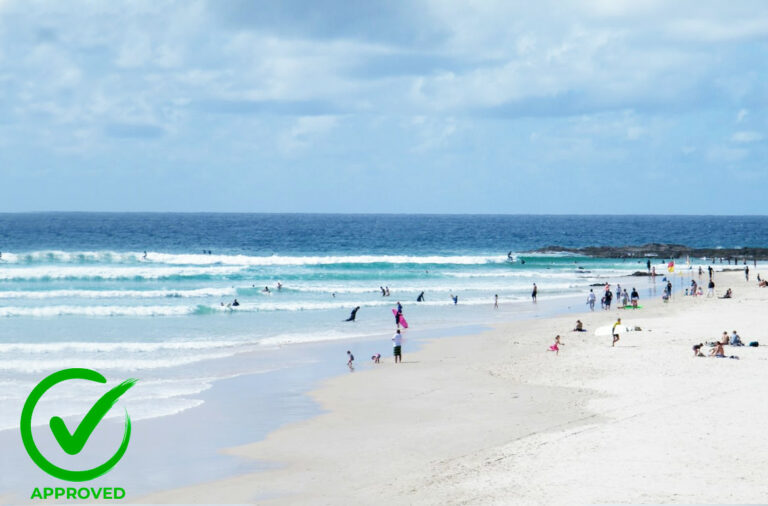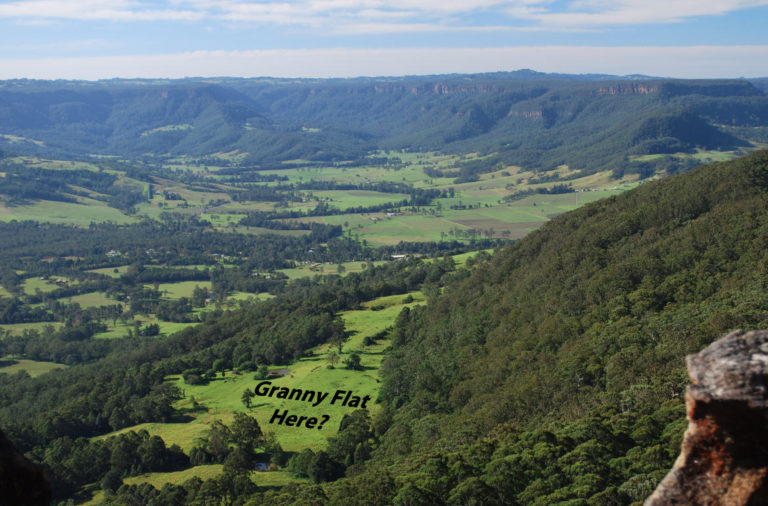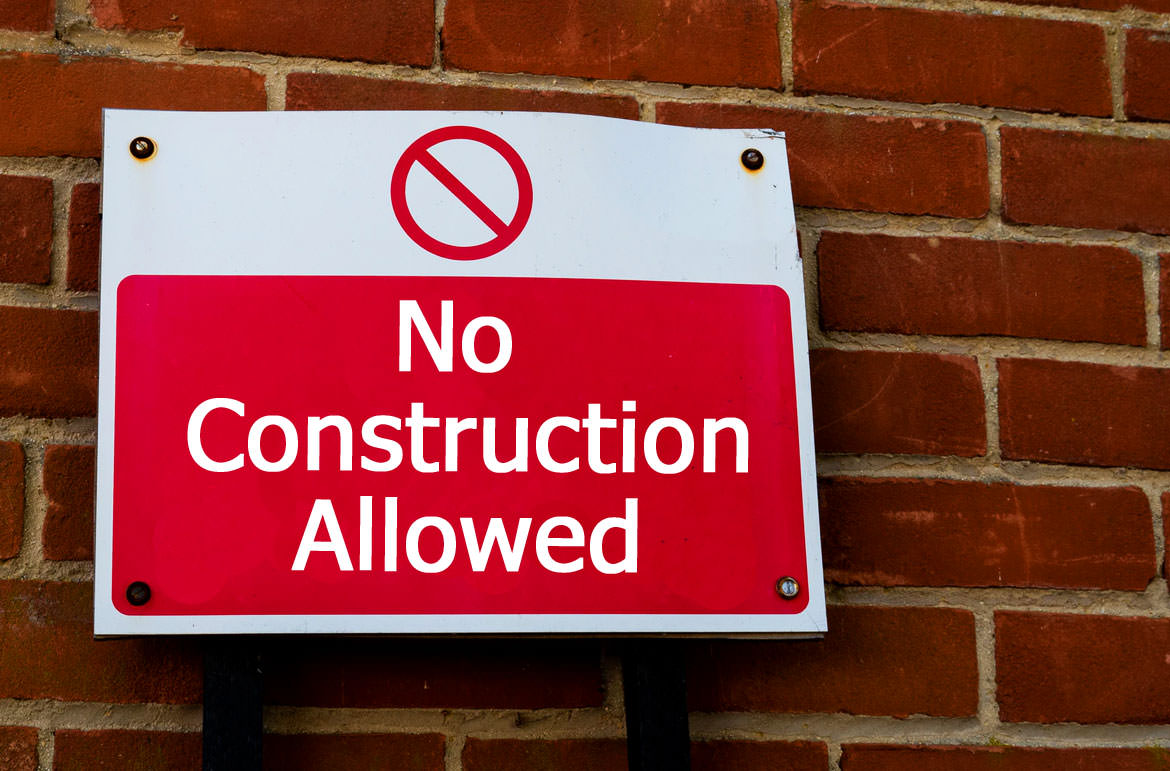
When planning on building a granny flat, you find yourself looking at a lot of strict rules. So, it’s normal to wonder – can you build a granny flat without Council approval?
Yes. However, a site investigation is recommended to ensure your property meets all compliant development guidelines. If this is the case you can build without council being directly involved and still have have it built legally.
DON'T PAY A FORTUNE FOR YOUR GRANNY FLAT. Find out how to deal with council and build a granny flat for the lowest cost possible. Learn More.
Today I will discuss whether granny flats need Council approval in-depth.
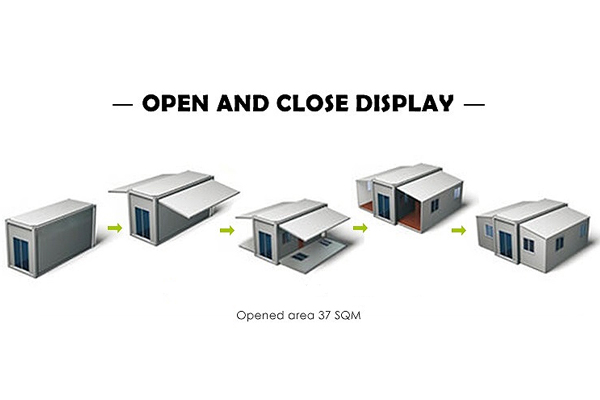
There are also these expandable granny flat such as this, which we help our clients source for the lowest cost. Get in touch with us today
I will show you how to get around having Council involved, share examples of things that may work, plus cover the common “shipping container” questions I am asked a lot.
Do Granny Flats Need Council Approval?
No – a granny flat does not need Council approval, but it needs a form of approval.
So, there are 2 ways to get your granny flat approved:
- Development Approval (DA) – The traditional process through your local Council
- Complying Development Certificate (CDC) – Using a private certifier approve your proposed development, if it meets all necessary criteria.
For the regulations on a CDC in your state, see my articles below:
- Granny Flat TAS Regulations – The Definitive Guide
- SA Granny Flat Regulations – The Rules Broken Down
- The Rules for Granny Flats in VIC
- Granny Flat WA Regulations – Guidelines Revealed
- Granny Flat QLD Regulations – All You Need to Know
- Granny Flat Laws NSW – The Definitive Guide
- Granny Flat ACT Regulations
There are many known cases of granny flats being constructed without the necessary approval.
I once asked a local real estate agent who works in a suburb with a lot of granny flats about how many he know of that were not “approved”. He speculated that 60% were not council approved.
This made me think, why doesn’t council do anything about it? Simply put it would take too many resources to check them all, and keep checking them to ensure they go through the necessary processes of either demolishing them or submitting DA’s to have them approved. (Some councils will allow a DA to be submitted for an existing structure)
However, this isn’t the case all the time.
Often, finding out a granny flat was not approved does not come to light until the property is being sold. This can cause major problems for both the buyer and seller.
Common examples include:
- One granny flat did not receive the final “Occupation Certificate”
- One granny flat only gained approval as a shed, which is not classified as a habitable space.
In both of these cases, the properties were sold using standard form contract to document the sale, which:
- Do not give the buyer the right to terminate the contract due to an unauthorised dwelling on site.
So, real estate agents must make reasonable enquiries to the seller as to whether any secondary dwellings received approval.
Anyone who advertises a property that has a granny flat, but it is later found that the granny flat does not meet all legal requirements, can:
- Be found to have been involved misleading, deceptive behaviour. Which can result is large fines.
Not gaining the necessary approval also creates potential problems with insurance coverage if an incident occurs in/because of the granny flat. For example, there is a case of insurance not covering the main home or secondary dwelling due to a fire that started in the unapproved granny flat.
It also gives Council the authority to potentially undertake additional works in order to receive the correct approval, such as:
- Issuing A “notice of intention to serve”, meaning you have 21 days to rectify the problem.
- If you do not comply within the specified time, issuing a “notice to remedy”, meaning they can authorise destruction of the granny flat.
- If you still fail to comply, the Council can take you to Court and you will be fined until it is removed.
So, if you don’t want to see:
- Your hard-earned work go up in flames
OR
- Be destructed before your eyes, resulting in a total loss of money and time,
Hence, It is always worth seeking the proper approval.
*Please note – These laws are specific to your local Council and are subject to change. I recommend you seek legal advice from conveyancing experts.
Are There Ways Around Getting Council Involved?
As mentioned, there are 2 ways of getting a granny flat approved. One is to have a private certifier approve your proposed development by:
- Issuing a Complying Development Certificate (CDC)
Your granny flat must meet all complying regulations.
But it means you can have a granny flat built in your backyard:
- Without getting Council involved *other than a necessary plumbing inspection
- Without having to worry about objections from neighbours
- CDC approved in as little as 10 days before physically building.
For more information on exactly how this approval process works, see my article about obtaining a CDC.
For ideas on what could work as a granny flat and gain approval “outside of Council”, see the examples below.
Examples of an Idea that Could Work for a ‘Granny Flat’ on Your Property
Looking for ideas of things that could work as a ‘granny flat’ on your property, without having to get Council involved?
The great news is that Tiny Homes, which have become very popular recently can be classed as a caravan. If they are build on a trailer frame (with wheels) and comply with Australian roadworthy rules.
If you make your caravan a fixed structure but not plumbed, so the tenants share the:
- Bathroom, laundry, and kitchen with the main dwelling.
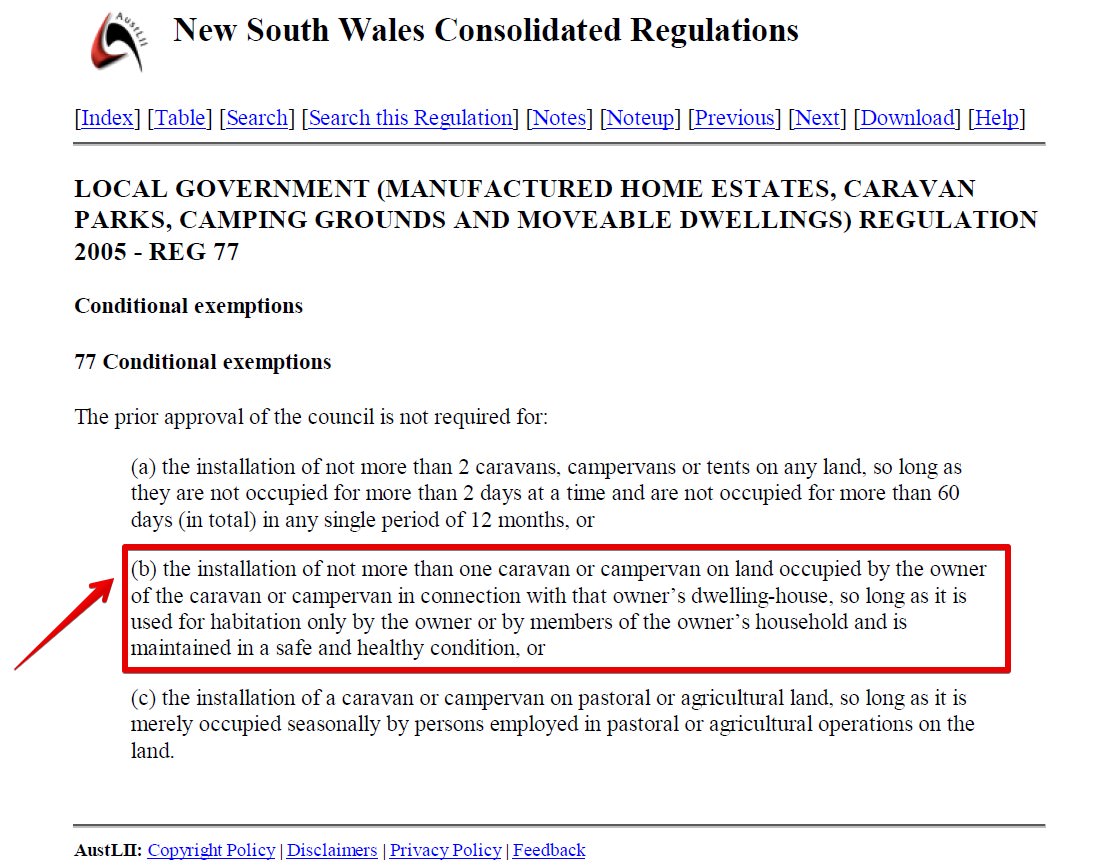
These rules state “caravans” are certainly possible
However if you want to build a permanent fixed structure, follow all regulations set out for a CDC and you may be approved by a private certifier.
Another option is a demountable (transportable) dwelling, under 25sqm, made a fixed structure.
- A short-term period (up to 48 hours at a time), and a maximum of 60 days a year.
It is worth giving your local Council a call – it really does depend on the Council your property is in, and their regulations.
What is Classed as a Caravan that Could Work as a Granny Flat?
These days, with the rise of rent and mortgages, people are seeking new, more innovative ways to live. We are experimenting with, as mentioned:
- Caravans
- Demountables
As most tiny homes are on wheels and movable dwellings, they are technically classified as a “caravan”.
As such, again your Council can limit the amount of time you can permanently live in one, but this can vary between Councils’.
Also, depending on your Councils’ regulations you may be able to build a tiny home in your backyard as a;
- Fixed structure, and it would classify as a granny flat.
For insight into the rules, it is worth seeing if a granny flat or a tiny home works best for you.
I also suggest you contact your local Council for their regulations.
Can You Use a Shipping Container on Your Land Without Council Approval?
No, Councils consider a shipping container a shed, and as such, they require Development Approval.
You can, however, get approval to convert a shipping container into a granny flat – see my article “Budget Granny Flats – All The Cheap Options”.
Conclusion
If you’ve ever wondered if you can you build a granny flat without Council approval, the answer is simple – yes. However, an investigation of your property is recommended, to ensure it meets all compliant development guidelines.
So basically, a granny flat still requires some form of approval, but not both of them need to go through Council.
You can choose from either:
- Development Approval (DA) – I.e. the traditional process of having to go through your local Council
- Complying Development Certificate (CDC) – I.e. hiring a private certifier to determine if your proposed development meets all necessary criteria to obtain a CDC.
The issue is to obtain approval for your granny flat through a CDC, it has to abide by stricter rules. Council made these rules stricter through their SEPP Legislation as they knew they might not be involved with the building inspections.
If you do not get a form of approval, you are likely to have:
- Major issues when selling your property
- Problems with getting any insurance claims if the issue started from the unapproved structure.
It is also risky territory, as you are giving Council the authority to:
- Ask you to rectify the problem
- Ask you to demolish the granny flat
- Take you to Court and fine you until the granny flat is removed.
Ideas of what could work as a ‘granny flat’ on your property are the below, made fixed structures:
- A caravan that is not plumbed, so tenants share the bathroom, laundry and kitchen with the primary dwelling.
- A demountable less than 25sqm.
- Tiny homes – classed as caravans with trailers.
Except when it comes to shipping containers as these are considered a shed, which is a non-habitable space.
So, you can convert them into a granny flat, but they require Development Approval. and it worth noting DA’s cost more and take more time than building through CDC’s.




